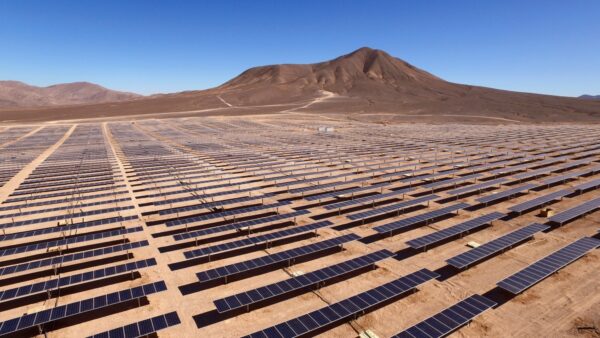Prof Dr Michiel Schaeffer
Chief Scientist, Co-founder
Board, Executive Team

Prof Dr Michiel Schaeffer is Chief Scientist at Climate Analytics and is one of the founders. He is a biophysicist and received his PhD in Dynamic Meteorology at University of Utrecht, The Netherlands, specialising in the interactions between atmosphere, ocean, ecosystems and society.
Michiel has over 20 years of experience and expertise in climate modelling and climate impact science, energy-system analysis, mitigation and adaptation, and providing scientific advice at the climate-policy interface for both developing and developed countries, including targeted scientific support to SIDS and LDCs in the UNFCCC process. He focuses on expanding Climate Analytics’ research and expertise, and helps bring together the scientific assessments with the policy applications across Climate Analytics. He is an author of, a.o. UNEP Emissions and Adaptation Gap reports, World Bank Turn Down the Heat reports, IPCC’s Fifth Assessment Report and many peer-reviewed scientific studies.
Prof Dr Schaeffer is also a researcher and lecturer at the International Islamic University of Indonesia and affiliated with the Copernicus Institute of Sustainable Development, Geosciences Faculty, Utrecht University, The Netherlands. He has been based in Europe, Africa, USA and Asia, working on building up co-operation with applied scientists and policy makers across and between these regions.
He brings high-level scientific skills, experience in the international climate policy world, a broad understanding of climate policy and science, high capacities in science communication, presentation and writing, and extensive experience in managing teams of scientists developing state of the art models, tools and products.
Publications
- Vyas, Schaeffer. Troubled waters: risks and realities of blue carbon in climate action. (2025)
- The global climate risks of Asia’s expansive carbon capture and storage plans
- Robiou du Pont, Dekker, van Vuuren, Schaeffer. Effect of discontinuous fair-share emissions allocations immediately based on equity. Nature Communications. 16 (2025) https://doi.org/10.1038/s41467-025-62947-9
- The full implications of Australia's North West Shelf decision
- The impact of global climate pledges on national action: a snapshot across Asia
- Sansonnet, Schaeffer, Baarsch. Seasonal forecast of two-metre temperature and precipitation in Tanzania: A hybrid cluster and point-by-point machine learning approach. Journal of Applied Meteorology and Climatology. 63, 10 (2024) https://doi.org/10.1175/JAMC-D-24-0014.1
- Mohamed, I.A.M., Schaeffer, M.S., Baarsch, F.B. Adapting East and Southern Africa’s livestock to climate change. Climate and Development. (2024) https://doi.org/10.1080/17565529.2024.2415397
- Transformative change to achieve 1.5°C: an EU member state assessment
- How can the EU transform its economy to meet the 1.5°C goal?
- Institutional decarbonisation scenarios evaluated against the Paris Agreement 1.5°C goal
- Climate cost modelling: analysis of damage and mitigation frameworks and guidance for political use
- Global Update: Climate target updates slow as science demands action
- Governing large-scale carbon dioxide removal: are we ready? - an update
- Scaling up Climate Action in Australia
- Paris Agreement Compatible Sectoral Benchmarks
- Decarbonisation of Australia’s energy system: Integrated modeling of the transformation of electricity, transportation, and industrial sectors
- The impact of climate change on incomes and convergence in Africa
- Climate change adaptation costs in developing countries: insights from existing estimates
- En route to Paris? Implications of the Paris Agreement for the German transport sector
- Auf dem Weg nach Paris? Implikationen des Paris-Abkommens für den Klimaschutzbeitrag des Verkehrs
- Inconsistencies when applying novel metrics for emissions accounting to the Paris agreement
- Pre-2020 commitments and the need for more ambitious NDCs
- Greenhouse gas accounting metrics under the Paris Agreement
- How can Paris Agreement commitments be improved now to close the gap to 1.5°C
- Scaling up climate action in Turkey
- A 1.5°C Compatible Carbon Budget for Western Australia
- For climate's sake: coal-free by 2030
- Production Gap 2019 Report
- A 1.5°C Compatible Carbon Budget for Queensland
- Towards optimal 1.5° and 2 °C emission pathways for individual countries: A Finland case study
- Global and regional coal phase-out requirements of the Paris Agreement: Insights from the IPCC Special Report on 1.5°C
- Pledged action leads to 2.9°C - time to boost national climate action
- Scaling up climate action in Argentina
- Decarbonising South Asia and South East Asia
- Australian political party positions and the Paris Agreement: an overview
- Transformation points - Achieving the speed and scale required for full decarbonisation
- Insights from the IPCC Special Report on 1.5°C for preparation of long-term strategies
- The EU long-term strategy to reduce GHG emissions in light of the Paris Agreement and the IPCC SR1.5
- Scaling up climate action in the European Union: Key opportunities for transitioning to a zero emissions society
- Governing large-scale carbon dioxide removal: Are we ready?
- Scaling up climate action in South Africa
- How do we limit warming to 1.5°C: informing the Talanoa Dialogue question, “How do we get there?”
- Science-based coal phase-out pathway for Germany in line with the Paris Agreement 1.5°C warming limit: opportunities and benefits of an accelerated energy transition
- 1.5°C Hotspots: Climate Hazards, Vulnerabilities, and Impacts
- Integrated Assessment Models: what are they and how do they arrive at their conclusions?
- Extending Near-Term Emissions Scenarios to Assess Warming Implications of Paris Agreement NDCs’
- New Zealand’s Zero Carbon Bill – getting the Paris Agreement right
- Science based coal phase-out timeline for Japan - Implications for policymakers and investors
- Paris Tango. Climate action so far in 2018: individual countries step forward, others backward, risking stranded coal assets
- Western Australia's gas gamble - implications of natural gas extraction in WA
- Ten key short-term sectoral benchmarks to limit warming to 1.5°C
- Why using 20-year Global Warming Potentials (GWPs) for emission targets are a very bad idea for climate policy
- Improvement in warming outlook as India and China move ahead, but Paris Agreement gap still looms large
- The Emissions Gap Report 2017
- Foot off the gas: increased reliance on natural gas in the power sector risks an emissions lock-in
- The Finkel Review and scientific consistency with the Paris Agreement
- A stress test for coal in Europe under the Paris Agreement
- The low carbon monitor
- The ten most important short-term steps to limit warming to 1.5°C
- Why negative CO2 emission technologies should not be classified as geoengineering
- Implications of the Paris Agreement for coal use in the power sector
- Implications of the 1.5°C limit in the Paris Agreement for climate policy and decarbonisation
- Science and policy characteristics of the Paris Agreement temperature goal
- What does the Paris Agreement mean for Finland and the European Union?
- Differential climate impacts for policy-relevant limits to global warming: the case of 1.5°C and 2°C
- Implications of oil extraction from the Great Australian Bight for Paris Agreement long-term goal
- Differences between carbon budget estimates unravelled
- Climatic risks and impacts in South Asia: extremes of water scarcity and excess
- Climate change impacts in Sub-Saharan Africa: from physical changes to their social repercussions
- 2.7°C is not enough – we can get lower
- The Coal Gap: planned coal-fired power plants inconsistent with 2˚C and threaten achievement of INDCs
- Analysis of equitable mitigationcontribution of countries
- Historical responsibility for climate change – from countries emissions to contribution to temperature increase
- Feasibility of limiting warming to 1.5 and 2°C
- 1.5°C risks and feasibility
- Five year commitments for the Paris Agreement: a fundamental issue for below 2°C and 1.5°C
- National post-2020 greenhouse gas targets and diversity-aware leadership
- INDCs lower projected warming to 2.7°C: significant progress but still above 2°C
- How well do integrated assessment models represent non-CO2 radiative forcing?
- How close are INDCs to 2°C and 1.5°C pathways?
- A short note on integrated assessment modeling approaches: rejoinder to the review of “Making or breaking climate targets — The AMPERE study on staged accession scenarios for climate policy”
- Impact of short-lived non-CO2 mitigation on carbon budgets for stabilising global warming
- Energy system transformations for limiting end-of-century warming to below 1.5°C
- Benchmark emission levels for 2025 and 2030 consistent with the below 2°C limit and the 1.5°C limit
- Switzerland INDC: first in, but room for improvement
- Are governments doing their “fair share”? New method assesses climate action
- Analysis of fair mitigation contribution for South Africa
- Africa's adaptation gap: bridging the gap - mobilising sources
- Zero emission targets as long-term global goals for climate protection
- Timetables for zero emissions and 2015 emissions reductions: state of the science for the ADP agreement
- Has the EU Commission weakened its climate proposal? Possibly
- Climate change impacts in Latin America and the Caribbean and their implications for development
- Making or breaking climate targets: the AMPERE study on staged accession scenarios for climate policy
- Locked into Copenhagen Pledges - implications of short-term emission targets for the cost and feasibility of long-term climate goals
- Mid- and long-term climate projections for fragmented and delayed-action scenarios
- Is it possible to return warming to below 1.5°C within this century?
- Disentangling the effects of CO2 and short-lived climate forcer mitigation
- The Emissions Gap Report 2014
- Turn down the heat: confronting the new climate normal?
- The IPCC’s fifth assessment report and its implications for Nepal
- Rebuttal of “Ditch the 2°C warming goal!”
- Coal's rapid phase-out essential, not enough to stay below 2°C warming
- Australian Energy "Green Paper" foresees continuing increase in coal use: undermines 2°C goal and heads towards 4°C world
- Persistent growth of CO2 emissions and implications for reaching climate targets
- China and the US: how does their climate action compare?
- Setting fair and adequate benchmarks for key countries
- Below 2°C or 1.5°C depends on rapid action from both Annex I and non-Annex I countries
- Loss and Damage in Africa
- The Emissions Gap Report 2013
- Warsaw unpacked: a race to the bottom?
- Analysis of current greenhouse gas emission trends
- Japan: from frontrunner to laggard
- What does the 2°C target imply for a global climate agreement in 2020? The limits study on Durban Platform scenarios
- Africa’s adaptation gap: climate change impacts, adaptation challenges and costs for Africa
- Loss and Damage in the UNFCCC: what relationship to the Hyogo Framework?
- Impact of the Doha outcome on surplus emission allowances and their effect on developed country emissions
- Adequacy and feasibility of the 1.5°C long-term global limit
- Turn down the heat: climate extremes, regional impacts and the case for resilience
- Climate shuffle: Climate Action Tracker update
- Emerging economies – potentials, pledges and fair shares of greenhouse gas reduction
- Warning of climate science - again - written in Doha sand
- 2° be or not 2° be
- Political implications of the long-term effect of surplus from the first and second Kyoto period
- Turn down the heat: why a 4°C warmer world must be avoided
- The Emissions Gap Report 2012
- Governments still set on 3°C warming track, some progress, but many playing with numbers
- Closing the 2020 emissions gap: issues, options and strategies
- Loss and Damage – climate change today and under future scenarios
- Long-term sea-level rise implied by 1.5 degree and 2 degree Celsius warming levels
- Evaluation of the International Energy Agency's Energy Technology Perspectives 2012 emission scenarios
- Climate Action Tracker Mexico – Assessment of Mexico's policies impacting its greenhouse gas emissions profile
- Copenhagen Accord Pledges imply higher costs for staying below 2°C warming
- After Durban: risk of delay in raising ambition lowers chances for 2°C, while heading for 3.5°C
- Negotiations heading towards high warming, high cost pathway
- No move to close the gap at Bangkok climate talks
- Assessment of Australia‘s policies impacting its greenhouse gas emissions profile
- Mitigation, pledges, impacts and effects on Least Developed Countries
- Periodic Review, background and analysis
- Science aspects of the 2°C and 1.5°C global goals in the Cancun Agreements
- China emission paradox: Cancun emissions intensity pledge to be surpassed but emissions higher
- Climate hotspots: key vulnerable regions, climate change and limits to warming
- Description of the Earth system model of intermediate complexity LOVECLIM version 1.2
- Analysis of the Copenhagen Accord pledges and its global climatic impacts‚ a snapshot of dissonant ambitions
- 2020 emission targets after applying updated GWPs from IPCC AR4
- Persistence of Atoll Islands under sea level rise
- Adequacy of Copenhagen mitigations pledges: the case for low carbon development strategies
- Ocean Acidification: Causes and Consequences
- Assessing 20th century climate–vegetation feedbacks of land-use change and natural vegetation dynamics in a fully coupled vegetation–climate model
- Copenhagen Accord pledges are paltry
- Halfway to Copenhagen, no way to 2 °C
- How feasible is changing track? Scenario analysis on the implications of changing emission tracks after 2020, from an insufficient global deal on 2020 reductions, to 2°C and 1.5°C pathways
- Near-linear cost increase to reduce climate-change risk. PNAS. (2008) https://doi.org/10.1073/pnas.0802416106

